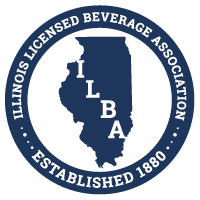NBWA Industry Update: Dietary Guidelines, Non-Alc Opportunities and the Health of the On-Premise

April 19, 2024
Cathy Sagle
Source: https://www.brewbound.com/
Zoe Licata
April 18, 2024
“Beer is a culture as much as anything else, and we need to do a better job of reminding policymakers,” Justin Kissinger, president and CEO of the World Brewing Alliance, told attendees Tuesday at the National Beer Wholesalers Assocation’s (NBWA) annual Legislative Conference in Washington, D.C.
Kissinger was part of an industry panel that closed out Tuesday’s General Session, along with Beer Institute (BI) president and CEO Brian Crawford, Brewers Association president and CEO Bob Pease and American Beverage Licensees (ABL) executive director John Bodnovich, moderated by NBWA president and CEO Craig Purser.
One of the largest regulatory concerns for all the panelists is potential changes to the latest dietary guidelines for beverage alcohol, which are updated every five years. The U.S. Departments of Agriculture (USDA) and Health and Human Services (HHS) will release their next Dietary Guidelines for Americans (DGA) in 2025.
Concerns over harsher guidelines and a growing neo-prohibitionism movement began bubbling to the surface last year, when the World Health Organization (WHO) issued a statement that there is “no safe amount” of alcohol that does not affect health. Around the same time, Canada’s Centre on Substance Use and Addiction advised adults to cut their intake of bev-alc to two drinks per week.
“This is coming,” Kissinger said. “This is a trend that people are really interested in pushing, there’s a ton of money around it. It has really bought pick-up in major media outlets around not just the United States, but around the world.”
Pease admitted that dietary guidelines have “not always been top of mind,” for craft brewers.
“But that is quickly shifting because of some of the ominous implications that could not go our way when the guidelines are released in 2025,” Pease said.
“A mentor of mine once told me 15 years ago, ‘Bob, the only people that care about the dietary guidelines live inside the Beltway’ – that’s changing,” he continued. “If ‘no safe level’ gets in the guidelines, and then there’s the direct link between alcohol and cancer, that’s a game changer. And that’s going to have an impact on everyone in this room. So we have to stand together and keep that from happening.”
Crawford also raised concerns over the process in which guidelines are being determined, and what information (or lack thereof) is being shared with the bev-alc industry.
Two organizations within the HHS – the Interagency Coordinating Committee on the Prevention of Underage Drinking (ICCPUD) and the Substance Abuse and Mental Health Services Administration (SAMHSA) – are conducting research on bev-alc consumption ahead of next year’s guidelines release.
“There is absolutely no transparency as to who is a part of it [ICCPUD and SAMHSA], what they are doing, what scientific review they’re doing,” Crawford said.
Additionally, the U.S. Congress has allocated $1.3 million to the National Academy of Sciences for alcohol research, raising concerns that there could be three conflicting reports, Crawford said.
“The concern that we have is that there is a complete and total lack of transparency on how this process is going to work here in Washington, D.C.,” Crawford said. “Nobody’s coordinating with one another, and they’re not communicating with stakeholders.”
Beer ‘Shouldn’t Be Afraid’ of Non-Alc
While encouraging support for the bev-alc industry, panelists also encouraged attendees to embrace non-alcoholic (NA) beer offerings.
“There’s a natural tendency when you hear about Dry January, or you hear about some type of moderation exercise, people are like ‘Oh no no, we don’t want to be a part of that,’” Purser said. “[But] beer is uniquely positioned to fill that void in some cases.”
“We should not be afraid – we dominate the NA space,” Crawford echoed, adding that beer holds 87% share of the non-alc market, and that the NA beer segment grew 32% between 2022 and 2023.
“Some of our brewers are saying ‘We don’t want to cannibalize our own products,’” Crawford continued. “Look, this is happening. We weren’t the ones that came up with Sober October … but we need to seize that opportunity and own that time.”
Retailers are also supporting the segment because of its ability to extend consumers’ time at bars and restaurants, according to Bodnovich.
“My guys want to sell an extra plate of chicken wings, and it doesn’t matter if you’re drinking something that’s alcoholic beer or non-alc beer or a low-alc beer,” Bodnovich said. “They’re ordering those chicken wings, they are playing the gaming machine in a bar, or a pull tab, or what it may be. That’s driving engagement.
“Our members, we look at Dry January as an opportunity,” he continued. “And there’s so many good products … whether it’s Bob’s members or Brian’s members, the quality is up there.”
“No-alcohol beer is an incremental opportunity,” Kissinger added. “Does it displace some consumption? Absolutely. But, as John mentioned, this is an opportunity to extend occasions.”
NA beer can also be used as a tool to spread beer’s message as the drink of moderation, Pease added.
“The vast majority of beer produced in this country [and] around the world is 5% ABV or less.” Pease said. “We really need to lean into – as a category and as a community, as an industry – that beer is the choice and the beverage of moderation. All the swirling negative rhetoric out there, we can turn that around and make that an opportunity for beer as a category.”
“When we talk about differentiation, the differences between the different products, we’re also talking about substitution,” Crawford added. “Substituting a high ABV product for a low ABV product as part of the solution to reduce harmful consumption.”
On-Premise Recovery Still A Priority
Strengthening the on-premise is also a priority for industry trade groups across the three-tier system. Efforts recently resulted in the introduction of the Creating Hospitality Economic Enhancement for Restaurants and Servers (CHEERS) Act earlier this year. The bipartisan bill would give tax deductions to bars, restaurants and other on-premise facilities that have draft beer systems to encourage investment in draft programs.
“It’s no secret that craft over indexes on-premise and in draft accounts,” Pease said. “So finding ways to revitalize that is crucial to us.”
Draft beer sales were already in decline prior to the COVID-19 pandemic, but have failed to return to pre-pandemic levels, and are still down about 20%, according to Crawford. BA chief economist and VP of strategy Bart Watson warned at the end of 2023 that draft beer sales could reach “their lowest level since World War II,” and that there is “zero reason to expect growth in 2024.”
“On-premise is where tastes are made, brands grow or are incubated” Bodnovich added. “Investing in those on-premise accounts is so important.”
Several industry organizations are applauding the CHEERS Act, including the BA, BI, NBWA, ABL, Steel Keg Association, National Restaurant Association, International Franchise Association, American Cider Association, Independent Restaurant Coalition, and BeerBoard.
